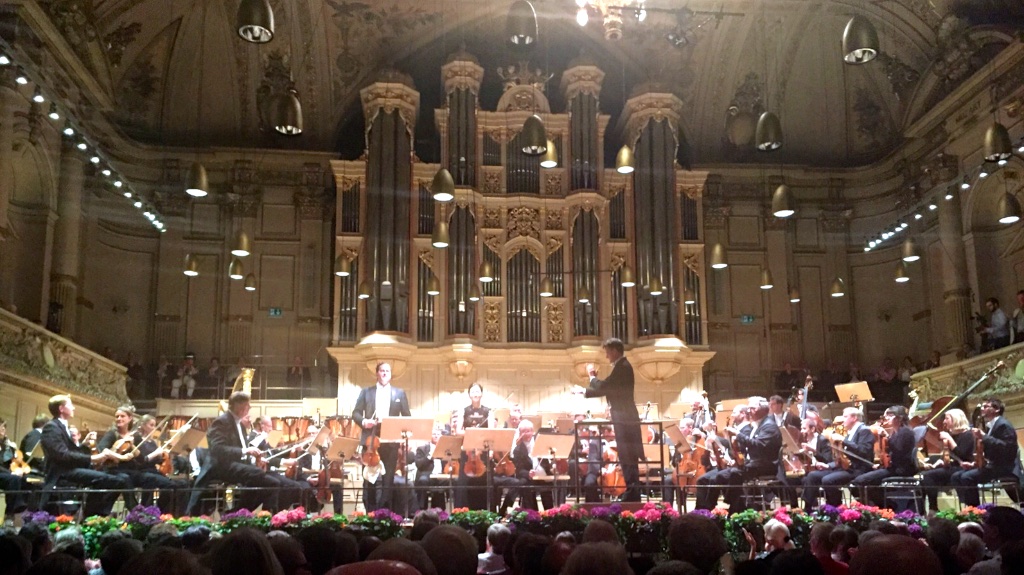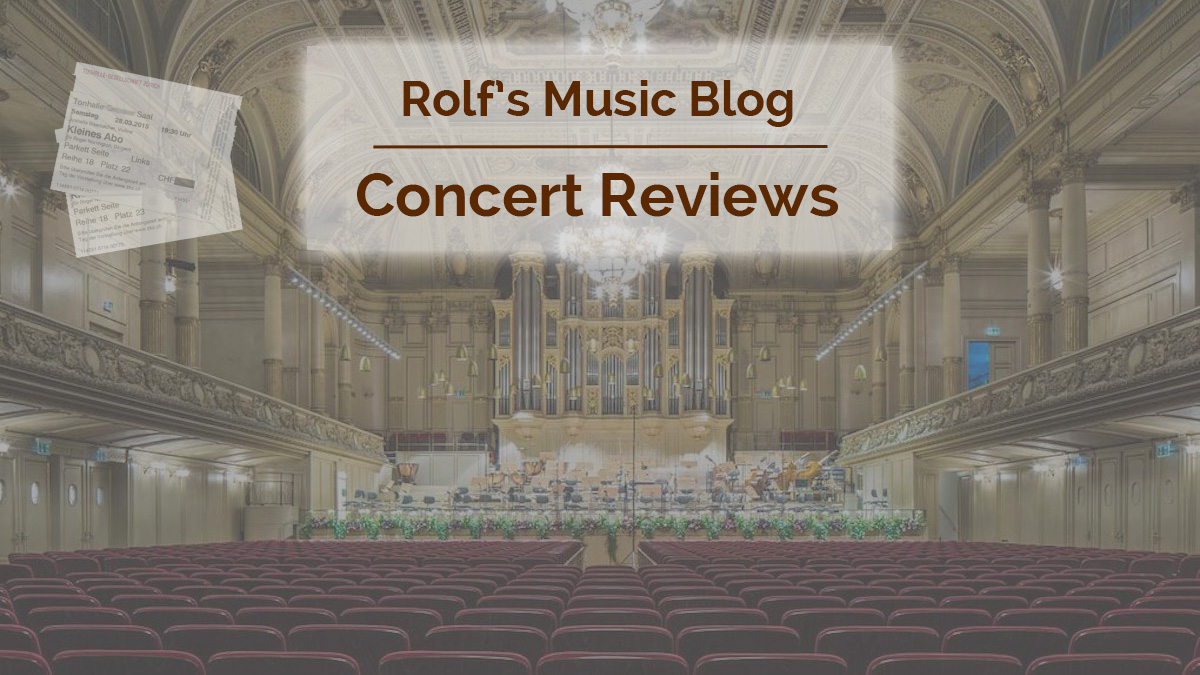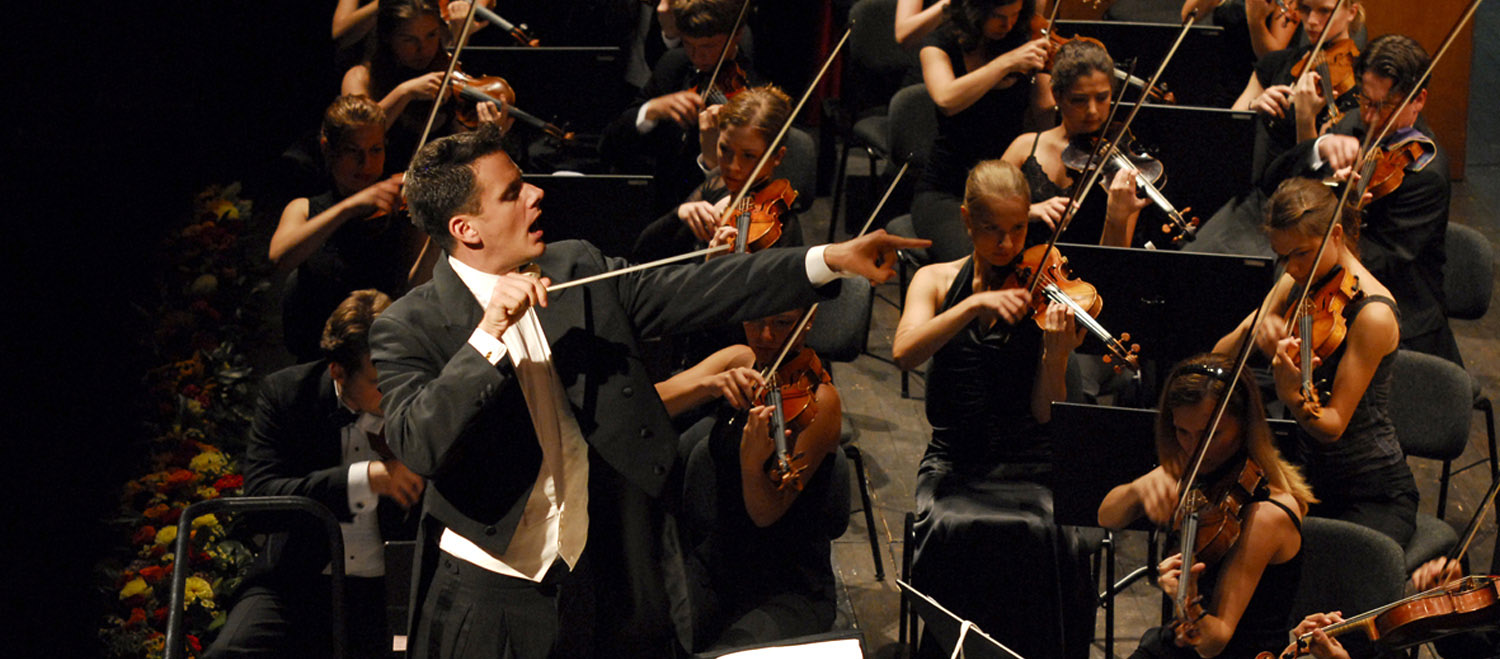Kyoungmin Park, Nikolaj Znaider, Philippe Jordan / Wiener Symphoniker
Webern, Mozart, Beethoven
Tonhalle Zurich, 2015-09-04

2015-09-07 — Original posting
2016-08-06 — Brushed up for better readability
Table of Contents
- Introduction / The Orpheum Foundation
- Anton Webern (1883 – 1945): Variations for Orchestra, op.30 (1940 – 41)
- Wolfgang Amadeus Mozart (1756 – 1791): Sinfonia concertante in E♭ major, K.364
- Encore — Wolfgang Amadeus Mozart : Duo for Violin and Viola in G major, K.423
- Ludwig van Beethoven (1770 – 1827): Symphony No.7 in A major, op.92
- Encore 2 — Felix Mendelssohn Bartholdy (1809 – 1849): A Midsummer Night’s Dream, op.61 — Scherzo
- Addendum 1
- Addendum 2
Introduction / The Orpheum Foundation
This concert was one of a series celebrating the 25th anniversary of the “Orpheum-Stiftung zur Förderung junger Solisten” (Orpheum Foundation for the Support of Young Artists). Since its creation in 1990, the foundation has supported a fair number of young artists. The condition for eligibility is 18 – 26 years of age.
The Artists
In this case, the violist Kyoungmin Park (born 1990) currently receives support by the foundation. The other soloist, violinist Nikolaj Znaider (Szeps-Znaider, born 1975), is a former support recipient. The conductor, Philippe Jordan is a member of the artistic board of the foundation. Unlike other institutions, the Orpheum Foundation does not perform competitions, avoiding all the associated “noise”. It rather relies upon its well-staffed artistic board for the careful selection of candidates. The support consists of establishing contacts with conductors or other, established artists, by facilitating concerts with eminent orchestras, etc.
The Board of Trustees
The board of trustees is currently under the direction of Vladimir Fedoseyev, with artists such as Francisco Araiza, Matthias Bamert, Daniel Barenboim, Plácido Domingo, Christoph Eschenbach, Bernard Haitink, Mariss Jansons, Kristjan Järvi, Zubin Mehta, Heinrich Schiff, and David Zinman as members.
Philippe Jordan
In this concert, Philippe Jordan (*1974) was conducting the Vienna Symphony Orchestra (Wiener Symphoniker). Philippe Jordan had his initial education in Zurich (piano, violin, music theory, composition). He finished his piano education — then assisted in Jeffrey Tate’s performance of Wagner’s “Der Ring des Nibelungen” at the Théâtre du Châtelet in Paris. His career as conductor started in Ulm. He was assistant to Daniel Barenboim in the Staatsoper Unter den Linden in Berlin. 2001 – 2004 he was chief conductor in Graz. Around this time, he launched a successful conducting career. In 2009, Philippe Jordan became Music Director of the Opéra National de Paris. Since 2014, he is also chief conductor of the Vienna Symphony Orchestra.
Anton Webern (1883 – 1945): Variations for Orchestra, op.30 (1940 – 41)
The program started with Anton Webern’s Variations for Orchestra, op.30. This is the composer’s second-to-last official work, a carefully crafted, strictly dodecaphonic piece of less than 10 minutes duration. Webern wrote that composition 1940 – 1941. It was first performed on March 3rd, 1943, by the Stadtorchester Winterthur (Winterthur City Orchestra) under the direction of Hermann Scherchen (1891 – 1966). The piece consists of a single movement, starting with the annotation “Lebhaft” (lively). The score asks for flute, oboe, clarinet, bass clarinet, horn, trumpet, trombone, tuba, celesta, harp, timpani, and strings.
Many listeners in the audience may have anticipated (and may perhaps have experienced) unintelligible, dissonant, if not cacophonic music. A composition that they would have to suffer through in order to enjoy Mozart and Beethoven? Actually, I think there were good reasons to place this piece at the beginning of the concert. Webern’s composition is reduced to the absolute minimum, to the essentials. It’s dodecaphony in its purest form, using strict intellectual, formal principles that evolved from the Second Viennese School, of which Anton Webern was one of the key exponents (along with Arnold Schönberg and Alban Berg).
Melody? Rhythm? Dissonant?
The formal building scheme in this music is highly intellectual that are hard to conceive, let alone understand for the inexperienced listener. In the case of Webern’s op.30, most listeners won’t even recognize the beginning of the individual variations. But it still is music, after all, even though melody fragments are consistently deconstructed. They are spread over the diverse voices and pitches in the rich orchestral setup. The piece definitely has rhythmic structure, undoubtedly well and firmly conducted by Philippe Jordan. But due to abundant fragmentation by very frequent changes in meter, tempo, and dynamics, there is no rhythm in the traditional sense.
The music isn’t dissonant. It’s largely in unison (just a single note at a given time), hence “aharmonic” at best. But when music is neither melodic, nor rhythmic, nor harmonic, what then is it?
A Personal, Naive Approach
I’m a non-musician, and I would call it “associative”: one can let the music work on one’s mind (it is quite entertaining, actually) while letting the musical memory produce associations. In this mostly passive process, one may recognize small melody fragments that are found as parts / components of bigger phrases / melodies in other, familiar (e.g., classical or romantic) compositions. With this music, I have had spontaneous associations with melodies in Mozart piano concertos, in music by Mahler, Pärt, Górecki. These are momentary inspirations (definitely not intended by the composer). I did not try “fixing” these onto specific bars / sequences in op.30. However, to me, this at least indicates that Music cannot exist in a vacuum, however artificially and intellectually it is constructed.
I feel that such “associative listening” is working much better when the short-term memory is not loaded with strong impressions from preceding classic or romantic compositions. Therefore, placing this composition at the beginning of a concert absolutely makes sense.In any case, to me, it was an interesting, enriching and refreshing experience.
Wolfgang Amadeus Mozart (1756 – 1791): Sinfonia concertante in E♭ major, K.364
For the central work of the evening, Mozart’s very popular Sinfonia concertante for Violin and Viola in E♭ major, K.364 (320d), two soloists joined the stage: Nikolaj Znaider, violin, and Kyoungmin Park, viola.
Nikolaj Znaider (Szeps-Znaider, born 1975 in Copenhagen) pursues two careers in parallel. As a violinist (a pupil of Boris Kuschnir), his career took off after he won the first prize at the 4th International Carl Nielsen Competition in 1992. This was followed by the first prize at the Queen Elizabeth Competition in Brussels in 1997. He is now playing the Guarneri del Gesù (built 1741) formerly played by Fritz Kreisler, loaned to him by the Royal Danish Theater. Besides this, around 2010, Znaider has started a conducting career.
Kyoungmin Park (born 1990 in South Korea) started playing the violin at the age of 6. In 2001, she switched to the viola, from 2003 on she studied in Vienna, from 2008 on in Berlin, first with Walter Küssner, then with Tabea Zimmermann. She has since won several prizes at competitions. She is currently receiving support by the Orpheum Foundation.
The Performance
Despite the relatively big orchestra (considering current, historically informed, let alone period instrument performances), Philippe Jordan managed to produce a relatively light and transparent soundscape. Listening to the dialog of the two soloists — perfectly coordinated in agogics and ornamentation — was a real pleasure. Unfortunately, the sound of the (steel-strung) violin was often a tad stingy and didn’t mix very well with the wonderful, warm and velvety sound of the viola (it’s not clear from the program notes whether Znaider was playing his Guarneri del Gesù): there wasn’t just mere harmony between the two instruments, sound-wise. At least, one could imagine better mixing, closer partnership in sound with more similar instruments.
The Solo Parts
Also, Znaider played with a relatively fast vibrato. This added to the differentiation between the instruments, especially since (as I was happy to note) Kyoungmin Park used vibrato very sparingly. Thanks to Mozart’s diligent orchestral disposition, the viola never had problems standing out from the big ensemble. One should note, though, that Mozart specified a tuning for the viola that is half a tone above the normal C – G – D – A: if the artist plays D major, the result is in E♭. This is easier on the violist’s left hand. It also makes the instrument sound brighter, and gradually louder.
The highlights in this double-concerto were the cadenzas: a wonderful performance, perfectly harmony in dynamics and coordination. The viola sound (especially with Kyoungmin’ Park’s limited vibrato) was remarkable in the slow movement. It made the instrument flourish among the other instruments. At times, this almost sounded like a viola concerto. The last movement is one of Mozart’s most serene and joyful inventions. Both solo instruments appeared to fight for dominance, with rich, vivid figurations and a lively discourse. It all was pure joy, both on the part of the musicians, as well as for the audience.
Encore — Wolfgang Amadeus Mozart: Duo for Violin and Viola in G major, K.423
As encore, the soloists played the second movement (Adagio) from Mozart’s Duo for Violin and Viola in G major, K.423. This piece presented a serene, peaceful and intimate dialog between the instruments — very nice!

Ludwig van Beethoven (1770 – 1827): Symphony No.7 in A major, op.92
Beethoven was very proud of his Symphony No.7 in A major, op.92. He thought of it as one of his best (so far). Under Philippe Jordan‘s direction, Beethoven’s music featured harmonic flow, arches, build-ups. In articulation, the orchestra tended towards legato playing, with dense sound. In parts, this may have been due to the relatively big orchestral body.
The Performance
Jordan carefully paid attention to Beethoven’s dynamic annotation. On the other hand, with this large number of musicians, ornaments and small note values had a tendency to be superficial, slightly rushed. Sometimes, especially in loud passages, I missed some transparency (which is so much easier to achieve with smaller ensembles): the woodwinds played very well, were really virtuosic, though sometimes they had difficulties to make themselves heard from behind the big body of string players. On the bright side, I was happy to see that the orchestra used the historically correct string arrangement, with the two violin voices sitting at either side of the podium, facing each other. This helped exposing / showing (literally) the dialog between these two voices, especially in the fast movements.
The second movement followed attacca, i.e., immediately following the first one. That Allegretto (an unusual annotation for a “slow” movement!) featured very nicely formed p / pp passages, in which the violas were able to show their nice, warm sonority. I was happy to note that throughout the symphony, Philippe Jordan closely followed Beethoven’s tempo annotations. The only exception was the Assai meno presto in the third movement, which was somewhat on the slow side. However, in the last movement, Beethoven’s tempo turned out to be a challenge for the orchestra: not primarily in the coordination between the string voices, but in the execution of fast figurations within individual string voices. Overall, Philippe Jordan nevertheless produced an enthralling interpretation, full of momentum and drive.
Encore 2 — Felix Mendelssohn Bartholdy (1809 – 1849): A Midsummer Night’s Dream, op.61 — Scherzo
The orchestra and Philippe Jordan rewarded the long applause with an encore, the Scherzo from Felix Mendelssohn Bartholdy’s incidental music to Midsummer Night’s Dream, op.61, MWV M 13. That was definitely a nice gesture, but at Jordan’s fast tempo, this was above the abilities of the orchestra. Maybe the musicians were just getting tired from the concert evening? This is a very virtuosic showpiece (yet excellent music) that deserves better coordination, more careful playing.
Addendum 1
For the same concert, I have also written a (much shorter) review in German for Bachtrack.com. This posting is not a translation of that German review, the rights of which remain with Bachtrack. I create the German review using a subset of the notes taken during this concert. I wanted to enable my non-German speaking readers to read about my concert experience as well. Therefore, I have taken my original notes as a loose basis for this separate posting. I’m including additional material that is not present in the Bachtrack review.
Addendum 2
A few weeks ago, I have posted a detailed comparison of 13 recordings of Beethoven’s Symphony No.7 in A major, op.92 (not including Philippe Jordan, though).




